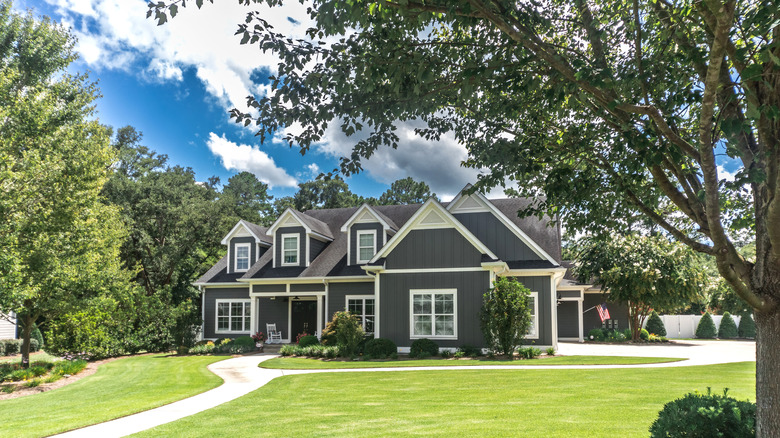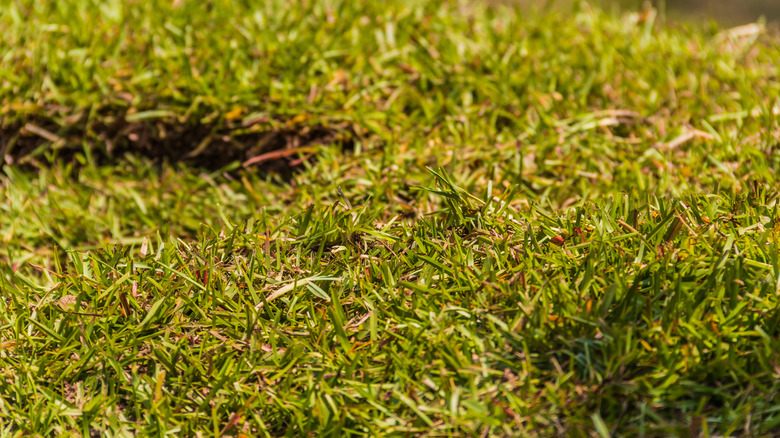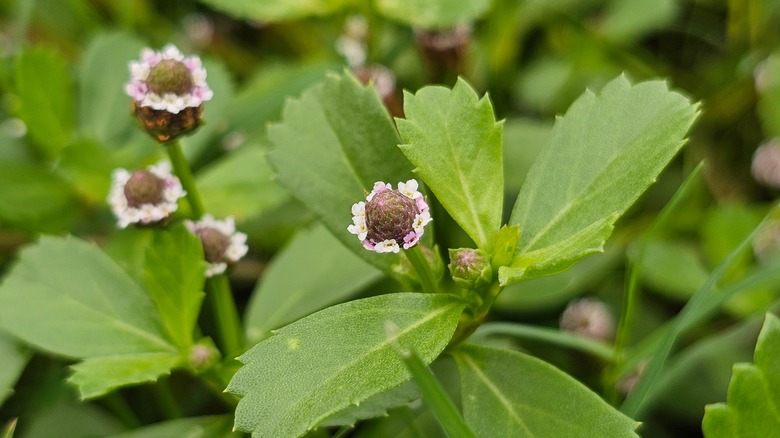Think Twice About Planting This Invasive Low-Maintenance Grass If You Live Here
Turf grass can take a lot of time and energy to maintain, so finding a low-maintenance grass that works for your location is always exciting. Unfortunately, some of the same factors that make a particular grass type convenient to have for a lawn can also make it prone to becoming invasive and displacing native species. This is sometimes the case with centipede grass, which has been known to escape from lawns and invade forests and grasslands in the southern United States.
Centipede grass (Eremochloa ophiuroides) has long been a popular option with homeowners as a grass type for those who hate doing yard work and want a low-maintenance turf option. Thanks to its shade tolerance and low mowing and fertilizing requirements, centipede grass requires far less effort than many other grasses. While it is originally from Southeast Asia, it grows well in USDA zones 7 through 10, making it a popular option in many southern states. If centipede grass escapes from lawns and spreads into forests in these areas, either through seeds or runners, it can quickly displace important native species. Luckily, centipede grass is relatively slow growing, so as long as it is correctly maintained and not allowed to go to seed or spread out of your yard, you should be able to grow it without threatening natural spaces. In fact, because it requires less fertilizer or water than many other grasses, it is considered a more sustainable turf grass option in many areas.
Tips for managing centipede grass
Centipede grass is easily killed by glyphosate-based herbicides if necessary, but ideally, you should look for less aggressive methods to prevent the grass from spreading out of your yard. Creating a barrier of mulched or edged flower beds can easily limit centipede grass's ability to escape your property and enter natural spaces. You can also hand-pull small sections of grass if necessary, which shouldn't be too challenging as centipede grass has a shallow root system.
Arguably, the simplest and most important way to keep your centipede grass under control is to prevent it from going to seed, which can be accomplished through mowing. Centipede grass should generally be kept to a height of about 2 inches or shorter during the summer and about 1 inch in winter. Keeping your lawn mowed and maintained should prevent seeds from forming, ensuring your grass won't set seeds that could be carried into wild spaces.
Lawn alternatives to centipede grass
While centipede grass can be a practical and responsible choice in much of the southeastern U.S., as long as it is controlled and maintained, you may still want to consider alternatives, especially if you live very close to forests, grasslands, or other areas where the centipede grass could become invasive. Unfortunately, many other popular grasses, including bluegrass, bahiagrass, and bermudagrass, can also become invasive and threaten southern grasslands and forests. While Saint Augustine grass is unlikely to become invasive, it requires large amounts of water and generally needs more fertilizer than centipede grass.
Plants like sunshine mimosa and frogfruit are lawn alternatives that are both native and mowable. Just be aware that sunshine mimosa goes dormant in the winter, so you may need to consider a mixed lawn that includes clover or other winter hardy species if you want a green lawn year-round. You can also move away from a traditional lawn completely and instead fill your yard with various native plants to grow in the southeast, like southern magnolias, inland sea oats, and saw palmettos.


